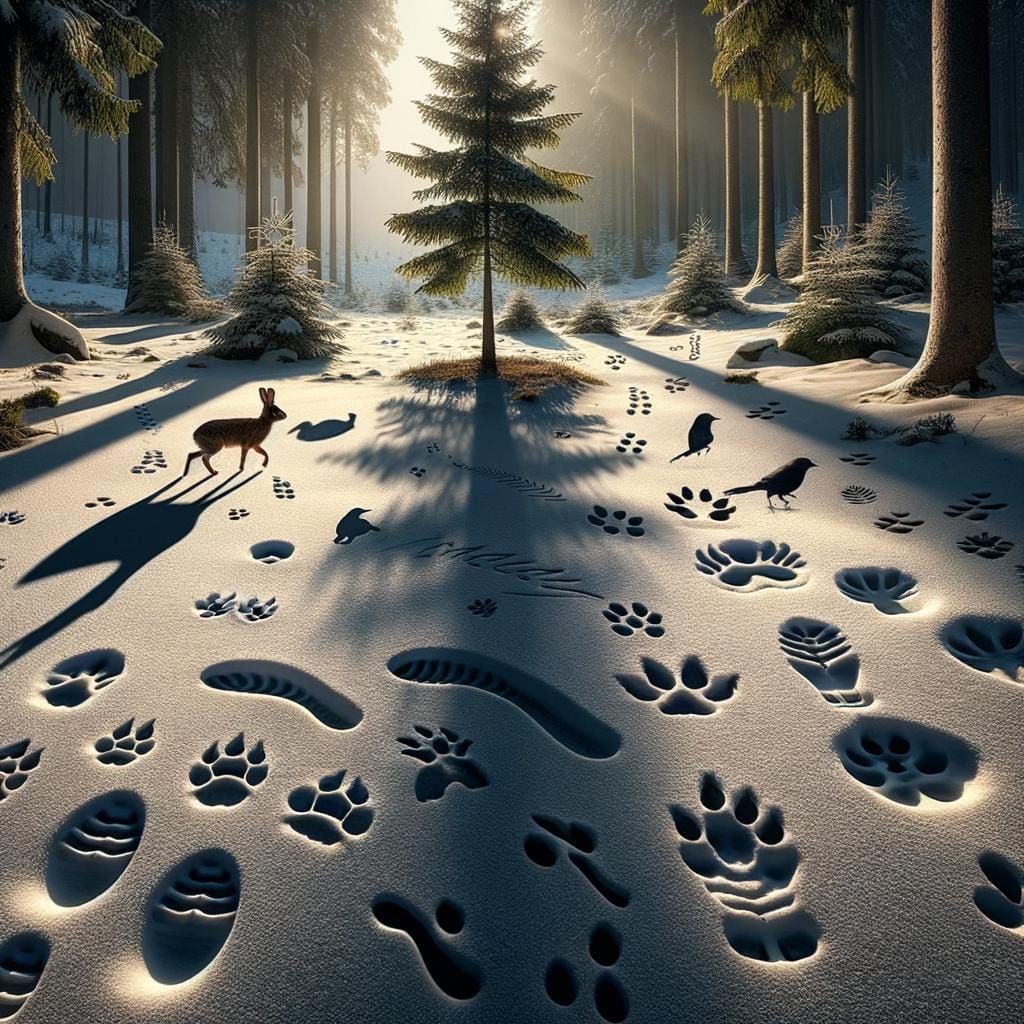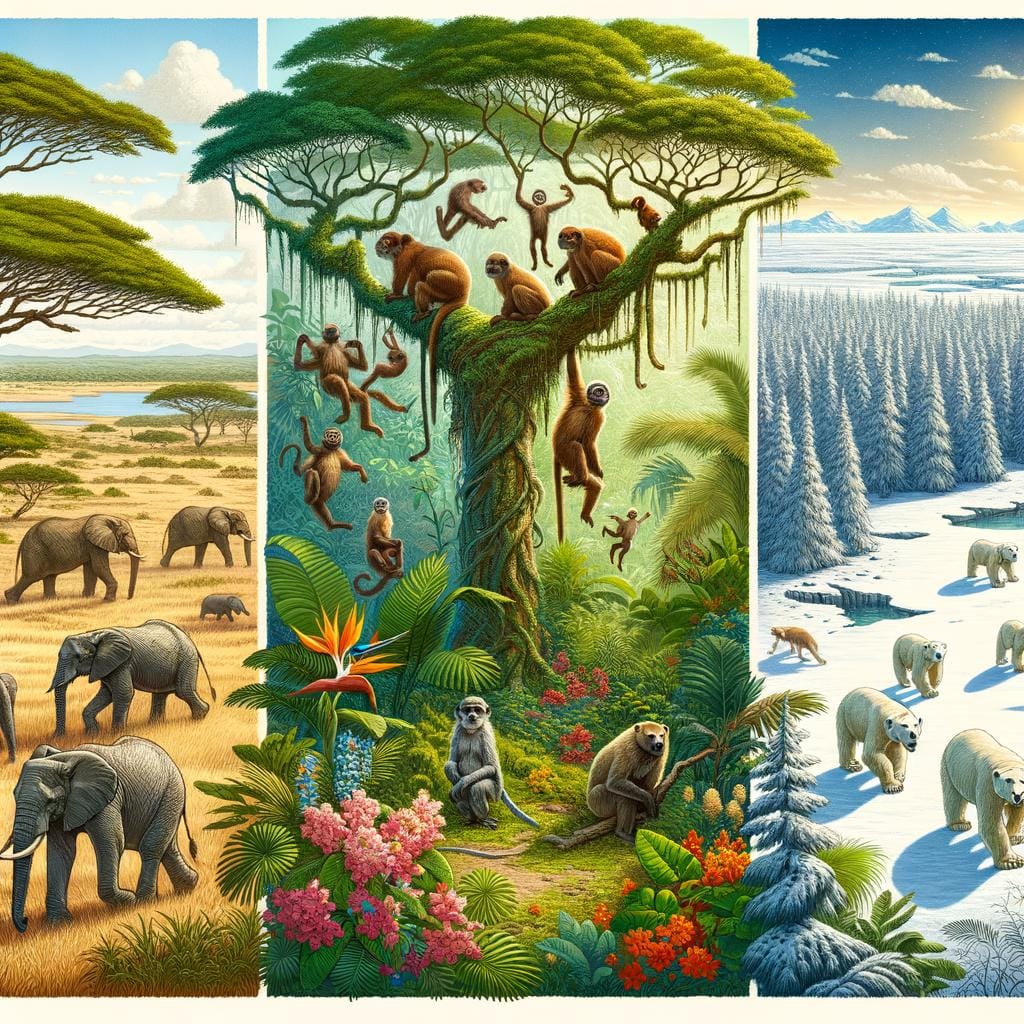Animal tracks are essential clues left behind by wildlife, offering valuable insights into the behavior and movement of animals in their natural habitats. In the field of wildlife tracking and research, animal tracks play a crucial role in studying biodiversity, identifying species presence, and understanding animal interactions. By examining these imprints left on the ground, researchers can unravel a wealth of information about the creatures that inhabit the environment.
Whether made by mammals, birds, reptiles, or insects, animal tracks come in various shapes and sizes. Each track is unique and can provide important details about the animal that created it. Understanding how to identify these tracks is key to successfully interpreting the patterns and behaviors of different species. By recognizing distinctive features such as toe arrangements or claw marks, trackers can distinguish between tracks and accurately identify the animals responsible for them.
Moreover, beyond mere identification, animal tracks offer a window into the world of wildlife behavior. These imprints can reveal crucial information about an animal’s movements, habits, and even emotions. By analyzing track patterns and interpreting gait changes, researchers can gain valuable insights into how animals navigate their surroundings, interact with one another, and respond to environmental cues. Such knowledge is not only fascinating but also essential for conservation efforts and wildlife management strategies.
Types of Animal Tracks
Mammal Tracks
Mammal tracks are diverse and can vary greatly based on the species. Some common mammal tracks include those of deer, raccoons, squirrels, and bears. Deer tracks often feature a distinctive split heart shape, while raccoon tracks resemble tiny human hands with five fingers. Squirrel tracks are generally small and show four toes on the front feet and five on the hind feet. Bears leave behind large prints with visible claw marks.
Bird Tracks
Bird tracks are unique due to their three-toed structure with one toe facing backward. Birds like turkeys have strikingly large tracks that can be easily identified. Waterfowl leave behind webbed footprints while predatory birds like hawks or owls have sharp talon impressions in their tracks. Identifying bird tracks can provide insights into the species present in a particular area and their behavior.
Reptile and Insect Tracks
Reptile and insect tracks may not be as commonly observed as mammal or bird tracks, but they are equally fascinating. Reptiles like snakes leave behind distinct belly scales imprints along with a dragging tail mark between their trail. Insects such as beetles or ants create intricate patterns in the dirt or sand as they move around.
Being able to recognize these smaller animal tracks adds another layer of understanding to the ecosystem present in a given habitat. Studying these animal tracks can help researchers determine biodiversity and ecological relationships within an area.
How to Identify Animal Tracks
Animal tracks are invaluable clues in the world of wildlife tracking and research. Being able to identify and distinguish various animal tracks can provide insight into the presence of certain species, their behavior, movements, and habitat preferences. For aspiring wildlife enthusiasts and researchers, learning how to interpret these subtle signs left behind by animals can be a rewarding and enlightening experience.
Characteristics to Look For
When attempting to identify animal tracks in the wild, several key features should be taken into consideration. These include the number of toes present, the overall shape of the track, the presence or absence of claws, and any other distinct markings such as foot pads or patterns. By carefully examining these characteristics and comparing them to field guides or online resources, one can begin to narrow down potential animal species responsible for leaving their mark.
Environmental Factors
It’s important to remember that environmental factors can impact the appearance of animal tracks. The texture of the ground where tracks are found, such as soft mud versus hard-packed soil, can affect how well-defined a track appears. Additionally, weather conditions like rain or snow can alter track visibility.
Being aware of these factors and taking them into account when identifying animal tracks is crucial for accurate interpretation. Wildlife trackers often rely on a combination of observations and knowledge about local habitats to make informed assessments about the animals they are tracking.
Resources for Learning
For those interested in honing their skills in identifying animal tracks, there are numerous resources available. Field guides specific to animal tracks can provide detailed information and visual references to assist with recognition.
Attending workshops or guided tracking experiences led by experienced experts can also offer valuable hands-on learning opportunities. Furthermore, practicing in different environments and developing a keen eye for detail through regular observation of animal tracks in the wild will enhance one’s ability to confidently identify and decipher these intriguing signs left behind by our fellow inhabitants of the natural world.
Size and Shape of Animal Tracks
Animal tracks play a vital role in wildlife tracking and research, providing valuable insight into the movements and behaviors of various animals. One important aspect to consider when analyzing animal tracks is the size and shape of the imprints left behind. The dimensions of tracks can offer clues about the species responsible for creating them, helping wildlife experts identify and study different animals in their natural habitats.
When examining the size of animal tracks, trackers are able to make educated guesses about the size of the animal itself. Larger tracks typically indicate bigger animals, whereas smaller tracks may belong to smaller species. In addition to size, the shape of a track can also reveal information about the type of animal that made it. For instance, hoofed animals like deer will leave cloven hoof prints, while carnivores such as foxes will produce distinct paw prints with claw marks.
Understanding how to interpret the size and shape of animal tracks is essential for accurately identifying and distinguishing between different species in the wild. By closely examining these details, wildlife trackers can gain valuable insights into the presence and behavior of various animals within a particular ecosystem. This knowledge not only contributes to scientific research but also aids in conservation efforts aimed at protecting vulnerable or endangered species based on their track patterns and signs in their habitats.
| Size and Shape | Relevance |
|---|---|
| Larger Tracks | Indicate larger animals |
| Distinct Shapes | Help identify specific species |
Animal Behavior Through Tracks
In addition to behavioral patterns, animal tracks can also reveal information about an animal’s movement and habits. Different animals have unique ways of moving through their environment, which is reflected in their tracks. For instance, some animals may travel in straight lines while others meander or circle around specific areas. By analyzing these movement patterns through tracks, researchers can understand how animals navigate their surroundings, find food, and interact with other species.
Understanding an animal’s behavior through tracks is not only essential for wildlife research but also plays a crucial role in conservation efforts. By studying how animals move and behave within their habitats, conservationists can develop strategies to protect these environments effectively. Furthermore, tracking animals through their footprints allows researchers to monitor populations, detect changes in behavior due to environmental factors or human activities, and ultimately contribute to preserving endangered species for future generations.
| Animal Tracks Data | Importance |
|---|---|
| Behavioral Patterns | Reveals feeding patterns, territorial markings |
| Movement and Habits | Shows how animals navigate surroundings |
| Conservation Efforts | Aids in developing strategies for habitat protection |
Tracking Techniques
When it comes to tracking animals in the wild, understanding the techniques and tools used by wildlife trackers is essential. By following animal tracks, researchers can gather valuable information about a species’ behavior, movement patterns, and habitat use. Here are some common tracking techniques used by wildlife trackers:
- Trailing: Trailing involves following fresh animal tracks to locate the animal itself. This technique requires patience and a keen eye for detail. Wildlife trackers carefully study the size, shape, and direction of the tracks to determine the animal’s whereabouts.
- Track Traps: Track traps are devices used to capture an animal’s footprints without harming the creature. These traps can be set up along known animal routes or near feeding areas to collect data on species presence in a specific area.
- Camera Traps: Camera traps are another important tool used in wildlife tracking. These motion-activated cameras are set up in strategic locations to capture images of animals as they pass by. Researchers can analyze these images to study animal behavior and population dynamics.
In addition to these techniques, wildlife trackers also utilize various tools such as GPS devices, binoculars, measuring tapes, and field guides to aid in their tracking efforts. By combining different techniques and tools, researchers can gain a comprehensive understanding of an animal’s movements and behaviors based on their tracks.
Overall, tracking animals through their tracks is a crucial aspect of wildlife research and conservation efforts. By using specialized techniques and tools, wildlife trackers can uncover valuable insights into animal behavior, contributing to our knowledge of various species and helping to protect endangered animals for future generations.
Famous Animal Trackers
There are several well-known wildlife trackers and researchers who have dedicated their careers to studying animal tracks and advancing our understanding of wildlife behavior. These experts play a crucial role in conservation efforts, research projects, and educating others about the importance of animal tracks. Here are some renowned animal trackers who have made significant contributions to the field:
- TOM BROWN JR.: Tom Brown Jr. is a famous naturalist, author, and tracker known for his expertise in wilderness survival skills and tracking techniques. He founded the Tracker School, where he teaches students about nature awareness, tracking, and survival skills.
- CYRIL RUOSO: Cyril Ruoso is a renowned wildlife photographer and tracker who has captured stunning images of animals in their natural habitats. His work not only showcases the beauty of wildlife but also highlights the importance of understanding animal behavior through tracks.
- LOUIS LIEBENBERG: Louis Liebenberg is a South African scientist and expert tracker who has conducted groundbreaking research on the tracking capabilities of indigenous hunter-gatherer tribes. His work has provided valuable insights into how traditional tracking methods can be applied to modern scientific research.
These famous animal trackers have inspired countless individuals to appreciate the art of tracking and its significance in wildlife conservation. By studying animal tracks and behaviors, they have shed light on the intricate relationships between animals and their environments.
By learning from these experts and following in their footsteps, aspiring wildlife trackers can contribute to ongoing conservation efforts, protect endangered species, and deepen our understanding of the natural world through the study of animal tracks.
Conservation and Research
Animal tracks play a crucial role in conservation efforts and wildlife research, providing valuable insights into the behavior and movement of various species. By understanding animal tracks, researchers can gather information about the presence of certain animals in an area, their interactions with their surroundings, and even their population size. This knowledge is essential for effective conservation strategies, especially when it comes to protecting endangered species.
One of the key benefits of tracking animal tracks is the ability to monitor endangered species more effectively. By studying the tracks left behind by these rare animals, experts can determine their range, preferred habitats, and migration patterns. This information is vital for creating protected areas or implementing conservation measures to safeguard these vulnerable populations from threats such as habitat loss or illegal poaching.
Furthermore, tracking animal tracks also contributes to scientific research on ecosystem dynamics and biodiversity. By analyzing the behavior and movements of various species through their tracks, researchers can gain a better understanding of how different animals interact within an ecosystem.
This knowledge is valuable for identifying potential threats to biodiversity, predicting ecological changes, and ultimately informing conservation practices to maintain a healthy balance within natural environments. In conclusion, the study of animal tracks not only offers valuable insights into individual species but also plays a significant role in broader conservation efforts aimed at preserving our planet’s rich biodiversity.
Frequently Asked Questions
What Is an Animal Track Called?
An animal track is called a footprint or spoor. It is the imprint left behind by an animal’s paw, hoof, or other body part as it moves across the ground.
How Do You Identify Wild Animal Tracks?
Identifying wild animal tracks involves looking at key characteristics such as the number of toes, shape of the footprint, size of the track, and the pattern of footprints left behind. Additionally, considering the habitat and location can also help narrow down potential animal species.
What Animal Makes a Single Track?
A single track can be made by various animals depending on their physical characteristics and behaviors. For example, a bird like a heron may leave a single track in mud with its webbed feet, while larger mammals like deer or bears may also leave single tracks due to their size and weight.
The context in which the track is found can provide clues to determine which animal made it.

An avid outdoor enthusiast, writer, and environmental advocate who has spent over two decades exploring the world’s most breathtaking landscapes. With a background in environmental science and a passion for adventure, Frances combines her love for nature with her talent for storytelling to inspire others to embark on their own outdoor journeys.


